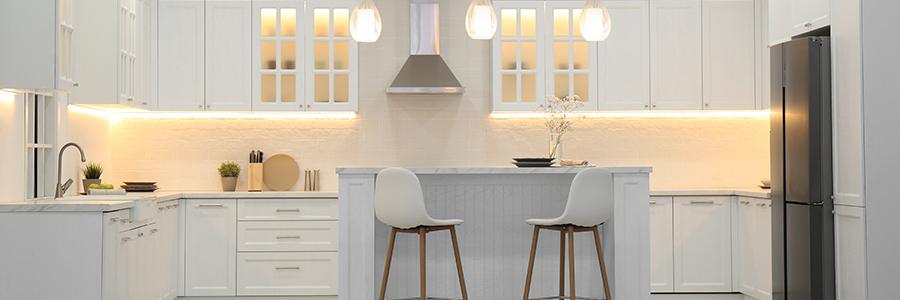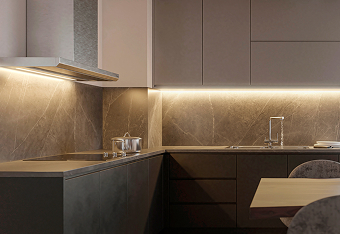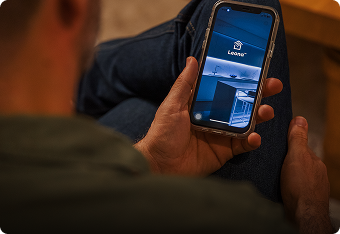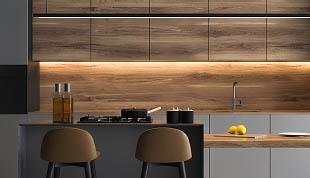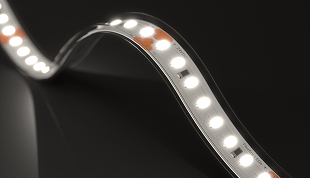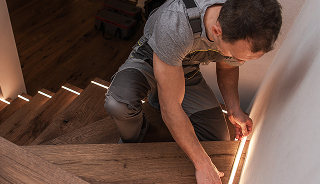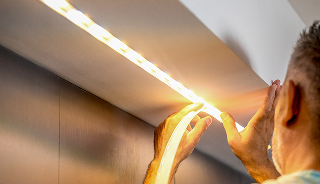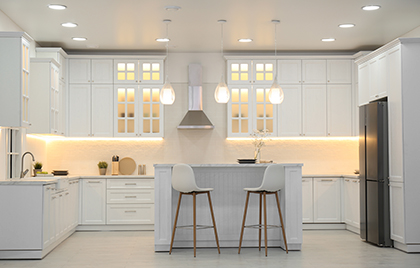What Are the Best LED Lights for Your Kitchen?
Premium LED kitchen lights are key to modern and luxury home design. Discover how LED strips can help to kick off your kitchen lighting remodel!
Designing the perfect kitchen lighting project is a lot like preparing an excellent meal: It’s all about knowing your ingredients, understanding the needs of the people you’re serving, and choosing when and where each element will shine its brightest.
While everyone’s taste is different, there are some general rules for finding the best LED lights for your kitchen. The ideal ones will last long, provide complete visibility for safe, detailed cooking, and offer the versatility to match every moment—from prep to mealtime ambiance. They should also fit easily into your layout and maximize every corner of your kitchen.
If that sounds familiar, it’s because we’ve just described the flexibility and adaptability of premium LED strip lights. In this blog, we’ll show you why they’re the top choice for modern kitchen lighting.
Is LED Strip Lighting Good for My Kitchen?
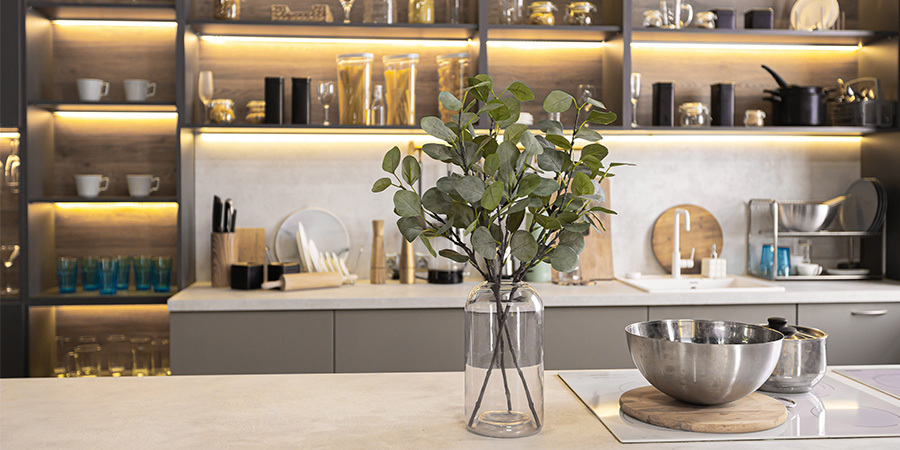
A kitchen has to support multiple tasks and moods throughout the day. From the sharp focus needed to prepare lunch to the relaxed atmosphere of hosting guests or even a quick midnight snack run, this space needs lighting that's just as versatile and ready for anything.
That's what makes LED strips so special. All their best traits come together to give you exactly what your kitchen demands of them:
Customizable LED Strips, Customizable Features
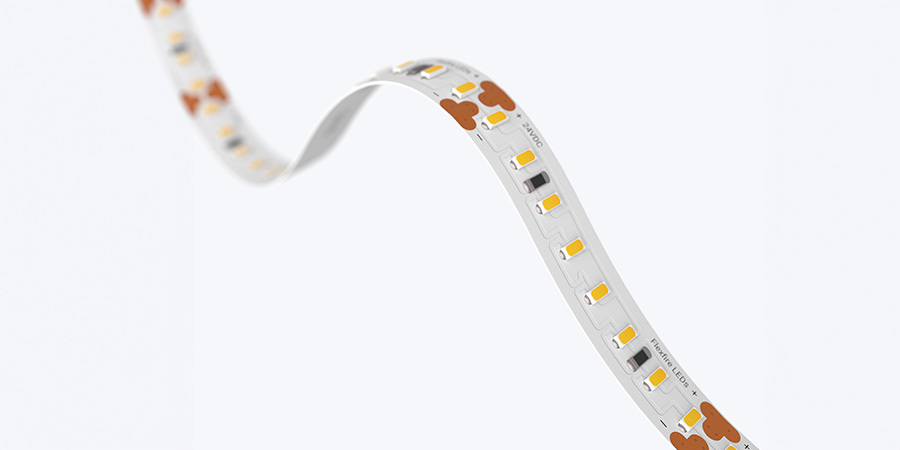
There are as many types of kitchens as there are cuisines around the world. And thankfully, the same can be said for LED strips: They’re flexible, customizable, and available in countless light types, colors, and even effects.
That means no matter if your countertop stretches 16 or 20 ft, LED strips can adapt to your layout, not the other way around. With multiple cut points depending on the model and plenty of power options, nearly any kitchen length or shape can be perfectly illuminated with the right planning.
Got tricky corners or gaps with no light, such as under the oven or above the stove? Strip lights have a high degree of flexibility, letting them bend vertically without issue. Plus, a wide variety of LED connectors makes it easy to join sections or hook them up to power—no wiring expertise required. Save your skills for cooking, not cabling!
Enhance Elegant Kitchen Decor, Don’t Overshadow It
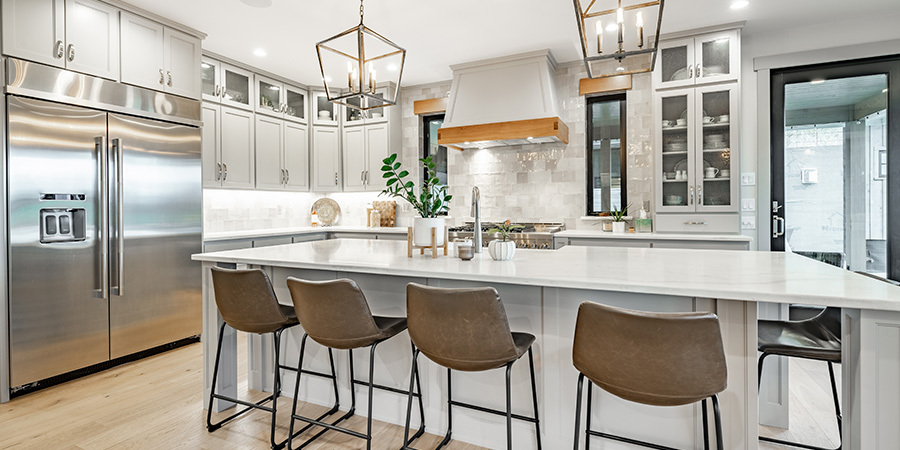
The best part about all this versatility is that it comes in an incredibly compact form. With lighting options as slim as ⅛ in wide (yes, about the size of a pencil lead), it’s easy to integrate strips into small kitchen spaces and tight niches, like the narrow edges under your countertop kick toe.
Unlike bulky old-fashioned lamps or modern fixtures that can look stunning but get in the way, these strips deliver beautiful, even light without stealing the spotlight from what truly matters: your kitchen and everything in it.
Another accessory that helps your lights blend into your design—rather than forcing the design to revolve around them—is a recessed aluminum channel. It gives your installation a clean, built-in finish that merges flawlessly with the wood or particleboard of your cabinetry. The same applies to well-placed indirect lighting, such as LED strips installed above your cabinets.
Low-Voltage Lighting Means Better Safety
With LED strip lights, you’re not only getting low profile—you’re also getting low voltage. Unlike large kitchen appliances, such as your washer or microwave, which run directly on your home’s electrical current, LED strips operate at 12V or 24V DC, powered by a driver (also known as a power supply) that connects safely to your main power source.
This setup adds a layer of safety to an environment with multiple high-voltage devices. That’s how your lighting doesn’t overload your electrical layout, ensuring that your kitchen lights stay steady, flicker-free, and without the damage or power surges that higher voltages could cause.
The Most Important of All Energy-Efficient Kitchen Upgrades

These days, energy efficiency feels like an overused buzzword—every appliance claims to have it. But don’t be fooled: In a kitchen, having lights that manage energy well actually makes a real difference for two key reasons.
First, LEDs use up to 80% less energy than traditional bulbs, which translates directly into lower electricity bills. That matters even more if you’re still running older appliances like fridges or dishwashers that aren’t as easy (or cheap) to replace.
Second, because LEDs handle energy so efficiently, they give off less heat. That means your strips will last much longer than other types of lights, saving you from frequent replacements. Plus, they operate at cooler temperatures in a space that already deals with plenty of heat from cooking, steam, and baking.
Smart Home Installation & Integration
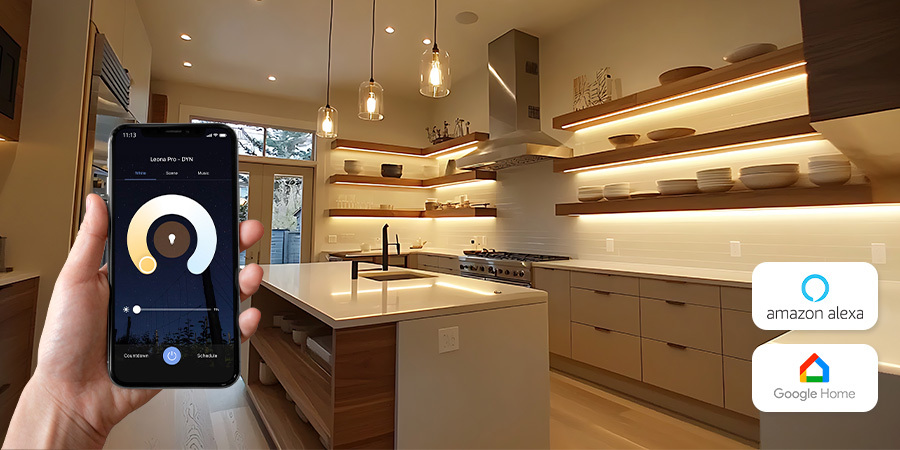
Beyond adaptability, safety, and subtlety, LED strips bring total convenience to one of the busiest rooms in your home. The kitchen is a place where you need light for nearly everything you do, and often when your hands are full, wet, or covered in ingredients. That makes traditional switches or manual dimmers a little inconvenient.
LED strips work great with premium smart home systems, letting you schedule, customize, and voice command your lighting however you like. For example, you can program it to turn on automatically at 6 PM—at full brightness, right when it’s time to start dinner—so you can focus on what really matters in the kitchen: full bellies and happy hearts.
What Type of LED Strips to Look for?
After learning about all these benefits, and with so many LED strip lighting options on the market, it’s easy to feel unsure about which ones to choose for your new or remodeled kitchen. Let’s break down your options and go over a few key guidelines to help you decide.
Are LED Color Changing Lights Suitable for Kitchens?
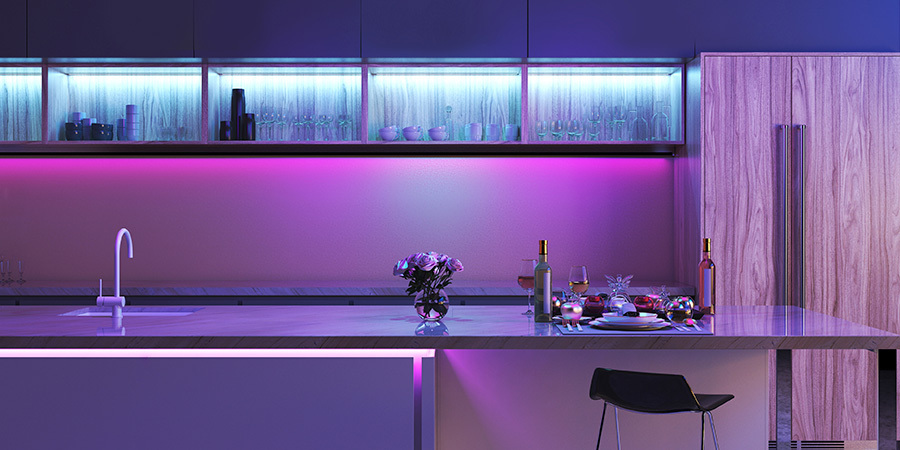
At the end of the day, your home is yours to shape however you want—that’s part of the joy of owning it. So if you want to use colorful, neon-like strip lights to give your kitchen a nightclub or bar vibe, or opt for a mysterious UV glow that makes it feel like a spaceship, we say go for it. There are no limits to your creativity with LED tech.
That said, most homeowners lean towards more traditional spaces, where white light is a must to make the kitchen look modern and clean. Of course, it also provides the clarity needed for safe cooking. If your goal is a kitchen with timeless elegance, that’s the way to go.
What’s The Best LED Color Temperature for My Kitchen?
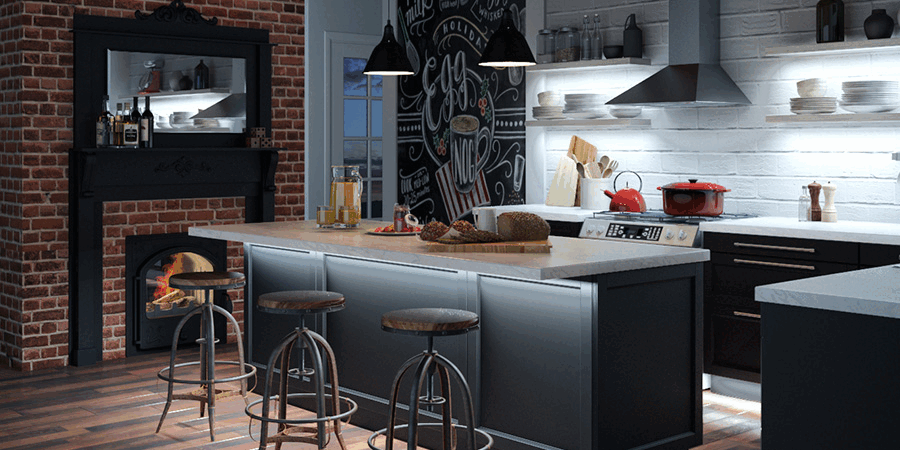
If you’ve decided on white lighting, one thing to always keep in mind is its hue. Warmer, yellower whites make food look more appetizing and create a welcoming atmosphere for guests. Cool, bluer whites, on the other hand, are ideal for dicing, chopping, and full visibility and safety.
This is known as Correlated Color Temperature (CCT), measured in Kelvins. If you can only choose one option, we recommend 4000K neutral white. It’s a balanced solution between warm and cool: energizing enough for cooking, balanced enough to highlight tiles and finishes, and soft enough to blend beautifully with your dining area—all with the help of a dimmer.
But if you want an even more advanced and flexible setup, go for a dynamic tunable white LED strip. It’s designed to adapt to every moment of your day. With just a swipe on your phone, you go from cool white for focused meal prep to neutral for showcasing cabinetry or warm white for cozy conversations, offering any shade of white exactly when you need it.
Do I Need A Water-Resistant LED Strip in My Kitchen?
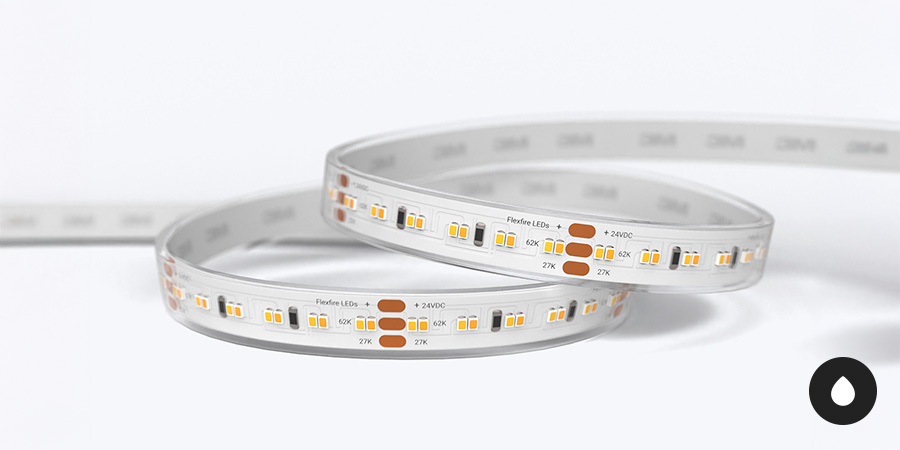
Beyond aesthetic choices or your lights’ final color, you might also wonder whether there are any special safety considerations—after all, kitchens have blenders, boiling pots, dishwashers, and plenty of water sources. And we’ve all heard it before: water and electricity don’t mix.
The truth is, most areas of your kitchen won’t need any special protection. The only exception is when the spots you plan to light are exposed to moisture, even occasionally.
If you’re adding light above your stove, where steam rises, or along the countertop edges near your sink, where splashes are inevitable, go for IP65-rated lights. What does that mean? In some corners, your kitchen may require the same lights you’d normally use outdoors.
The Best LED Lighting Strips for Kitchens: Flexfire’s Picks
By now, you already know LED lights are hands down the best choice for this space. However, since at Flexfire we understand there are endless ways and places to install lighting in your kitchen, it helps to have a guide that translates that knowledge into real products.
We don’t want you to leave without checking out our top recommendations, American homeowners’ favorite kitchen LED strip choices! Explore the applications below to find the perfect fit for your space:
Under-Counter Lighting: Outline™ LED Strip Series
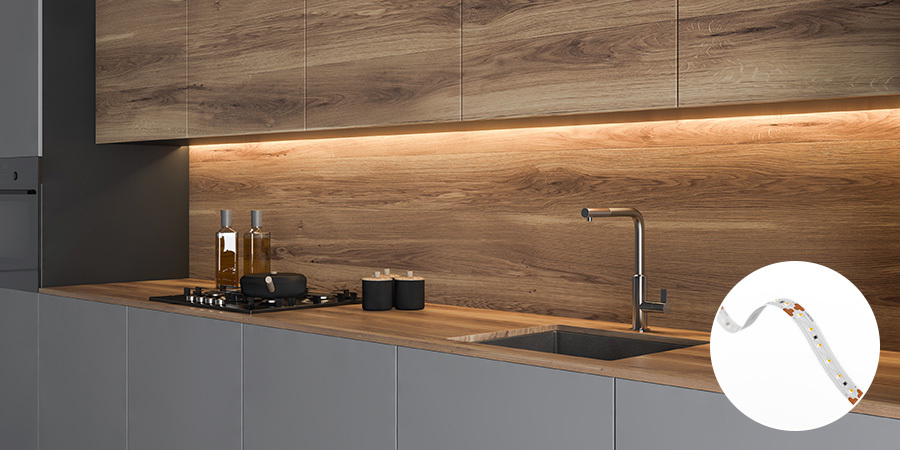
Since the primary purpose of this light is decorative—highlighting the wood finishes on your bottom cabinets or providing a gentle pathway through the kitchen at night when grabbing a glass of water—this subtle, white ornamental LED strip is the perfect solution, offering a soft, delicate glow.
Under-Cabinet Lighting: Accent™ LED Strip Series
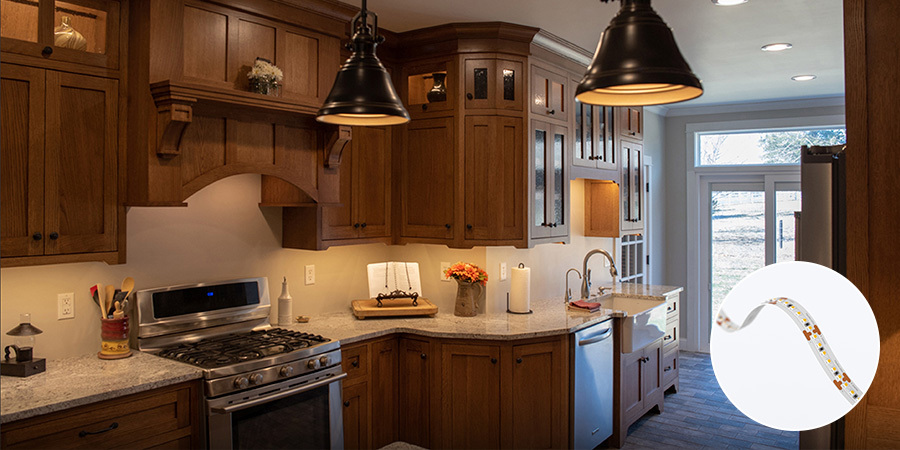
The lights we place under our cabinets should be bright enough to safely guide us through every step of a recipe, but not so intense that they overwhelm the space. They should remain decorative for other occasions and subtly highlight details like our backsplash and countertop details.
That’s why a moderately bright, well-balanced LED strip is ideal for this accent application.
Kitchen Island Lighting: Architectural™ LED Strip Series
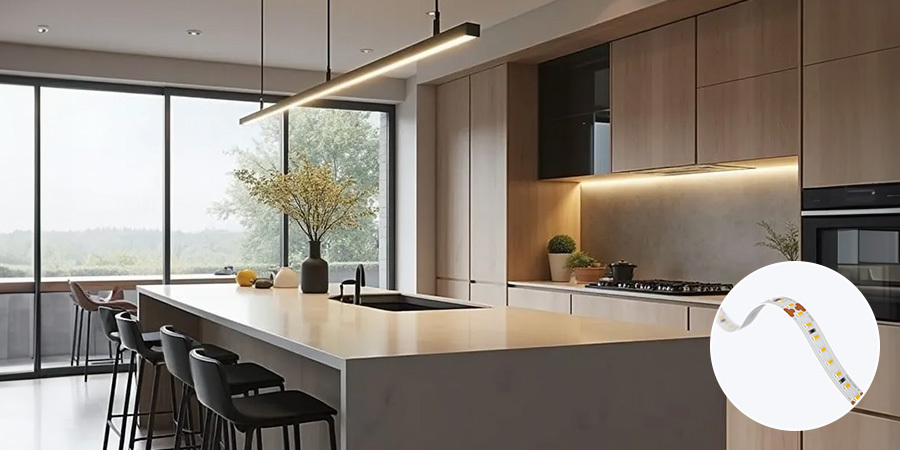
Bright, architectural LED lights above the kitchen island often take the place of traditional overhead bulbs. They provide enough illumination to light the entire kitchen. It’s a bonus if they’re pendant-style fixtures in an aluminum channel that are a work of art themselves and diffuse the light.
Ceiling Light: Architectural™ LED Strip Series
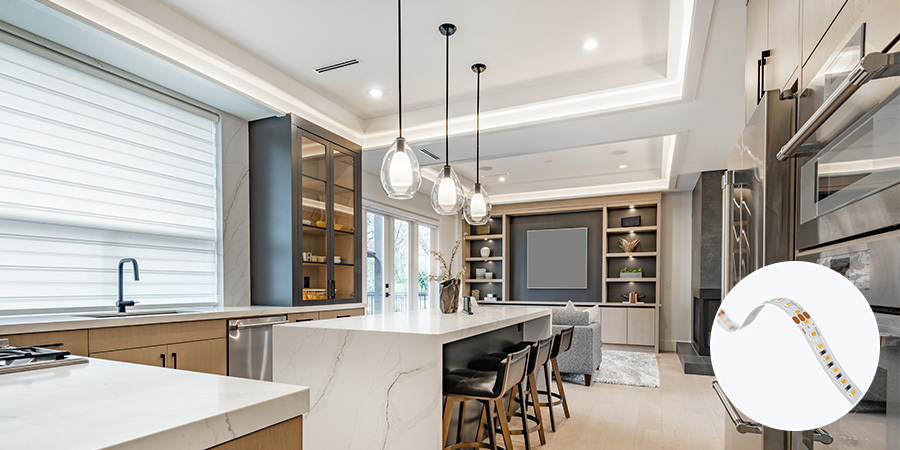
Many kitchens also benefit from very bright, tunable white LED strips tucked into a crown molding or cove, which can serve as the main source of lighting. This is a great way to make the ceiling work for you, reflecting indirect light that brings both life and visibility to the space.
Each of these premium options delivers exceptional quality and design flexibility for your home. Ready to take the next step? Contact our expert lighting team to start planning your kitchen project today!
